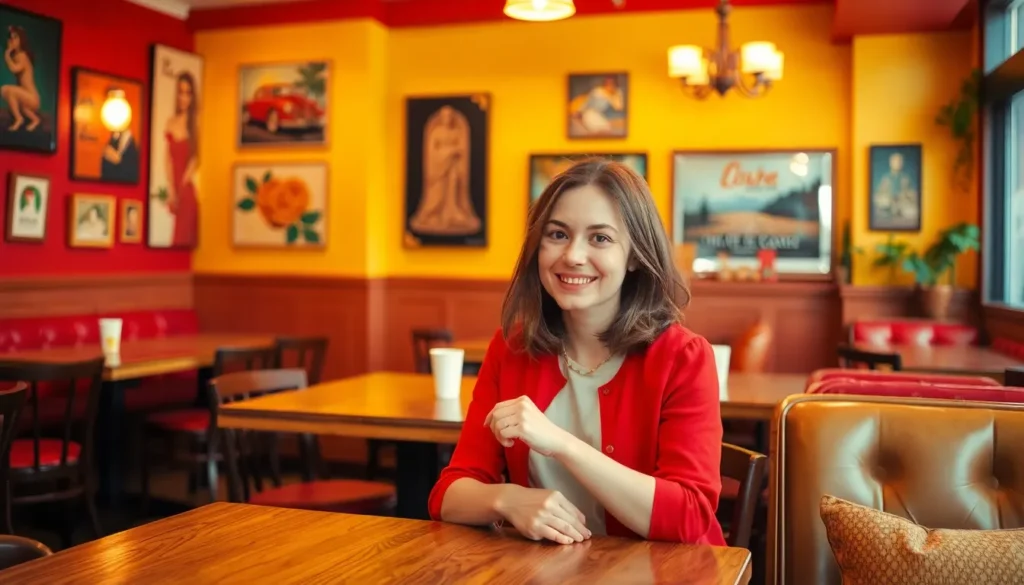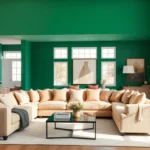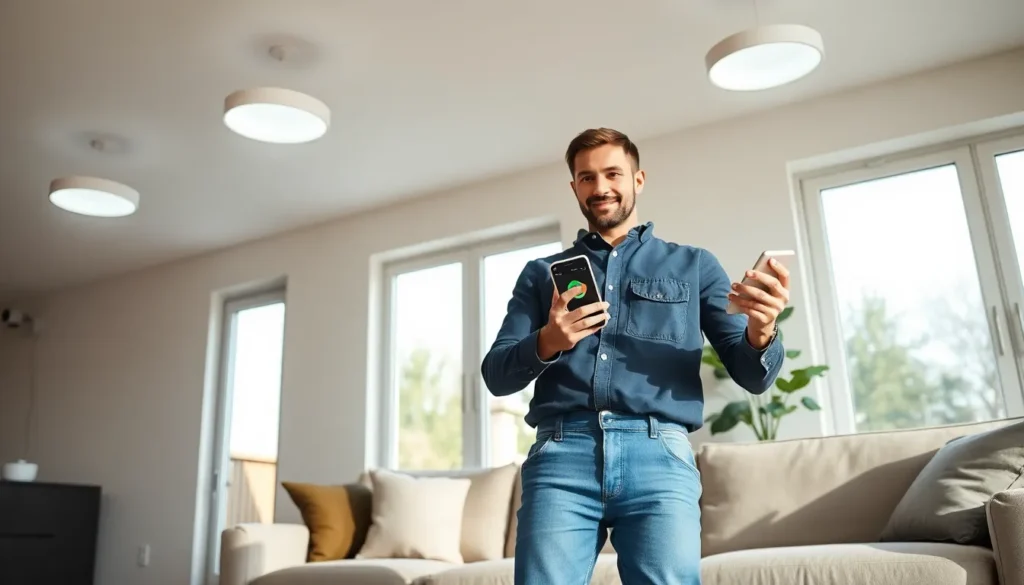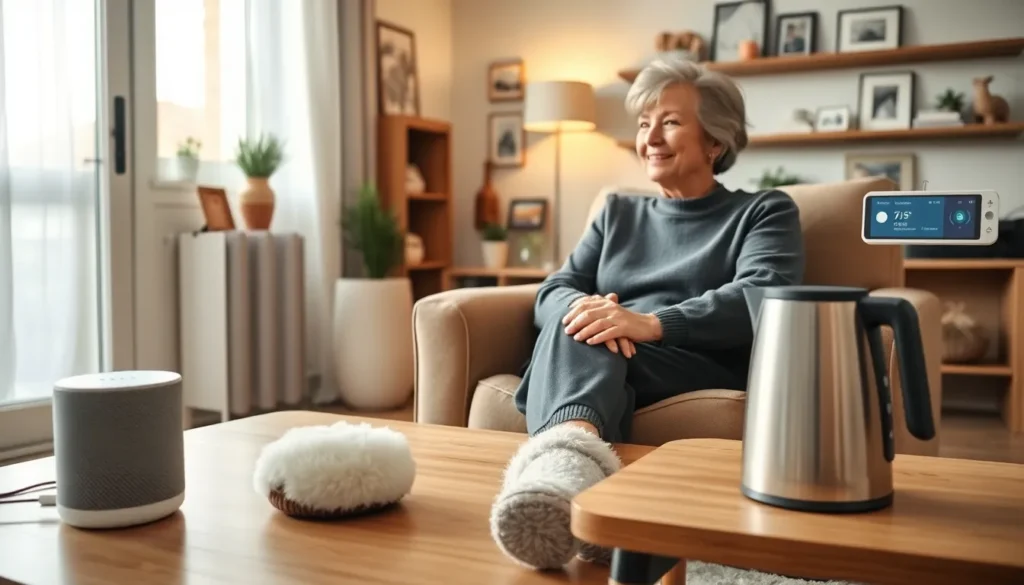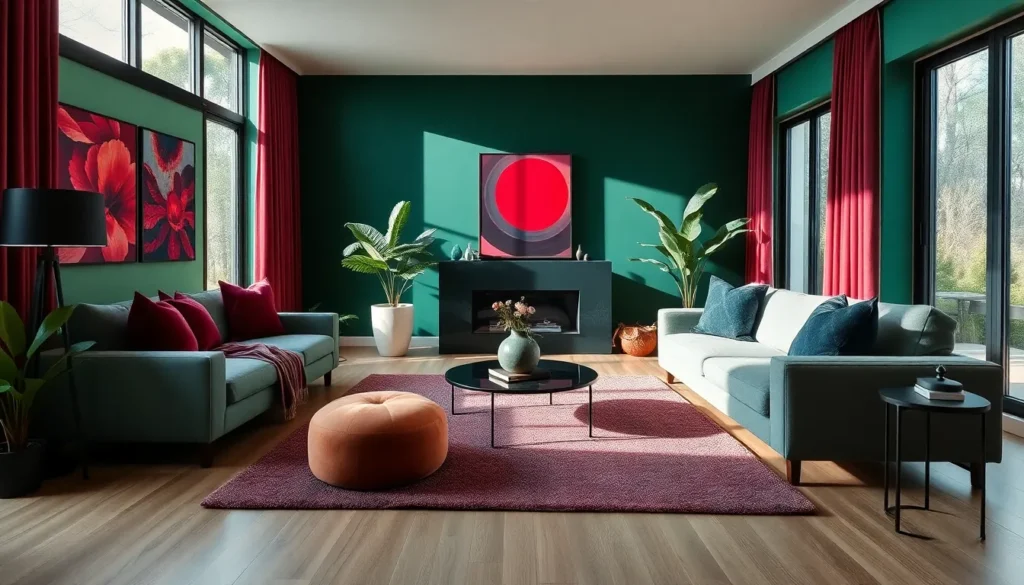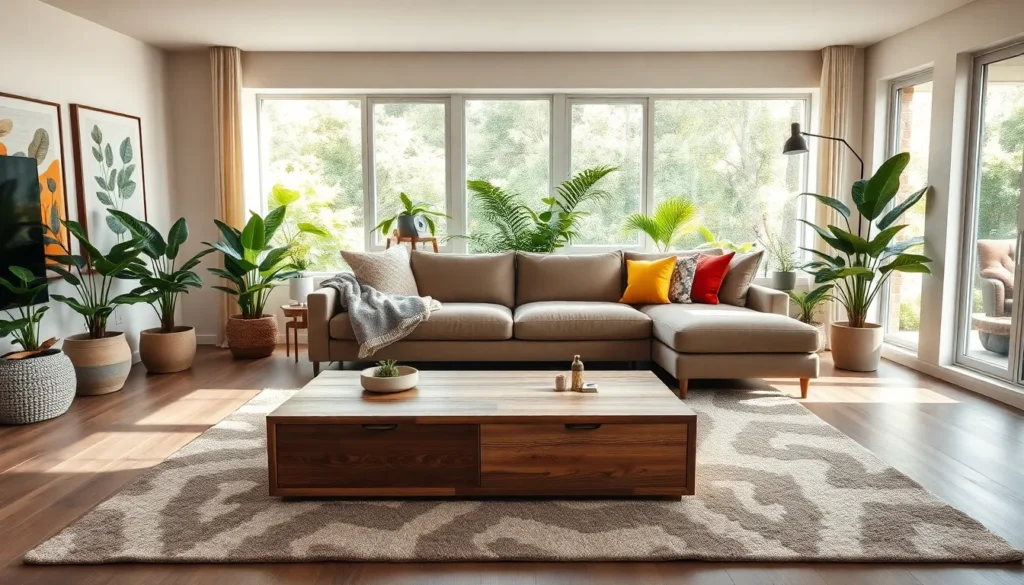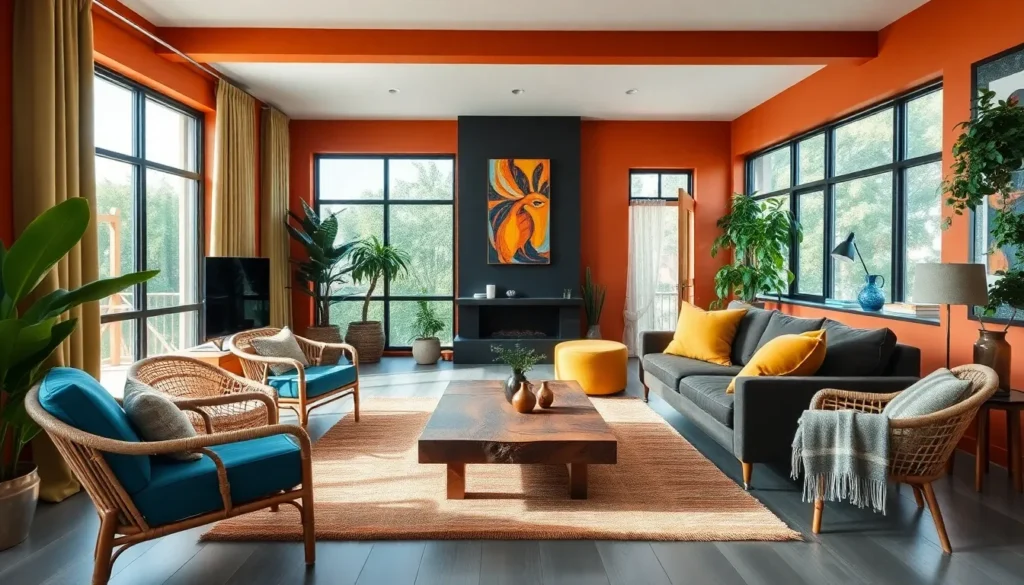Colors aren’t just pretty to look at; they hold the power to influence emotions and behaviors. Ever wonder why your favorite café uses warm reds and yellows? It’s not just for aesthetics; it’s all about creating that cozy vibe that keeps you coming back for more coffee. Color psychology dives into this fascinating world where hues can evoke feelings, spark creativity, or even make you feel more relaxed.
Overview of Color Psychology
Color psychology explores how colors impact emotions and behaviors, influencing perceptions in various contexts. Red, for example, often signifies energy and urgency, making it common in sales promotions. Blue conveys calmness and stability, frequently used in corporate settings to instill trust.
Different colors evoke specific feelings. Green represents tranquility and nature, promoting relaxation in spaces like spas. Yellow stimulates optimism and cheerfulness, often found in children’s products to create a joyful atmosphere. Neutral colors, such as gray and beige, provide a balanced backdrop in design, emphasizing sophistication.
Understanding color meanings enhances marketing strategies. Brands carefully select colors to align with their values and attract target audiences. Research indicates that consumers form judgments about a product within 90 seconds, primarily based on color.
Applications extend beyond marketing. Interior designers utilize color psychology to create desired environments. Warm colors can elevate moods in social settings, while cool tones support focus in workspaces.
Overall, color psychology significantly impacts both individual experiences and broader societal trends. Marketers, designers, and psychological experts leverage these principles to foster desired reactions, making it essential to consider when planning visual elements.
The Impact of Color on Emotions
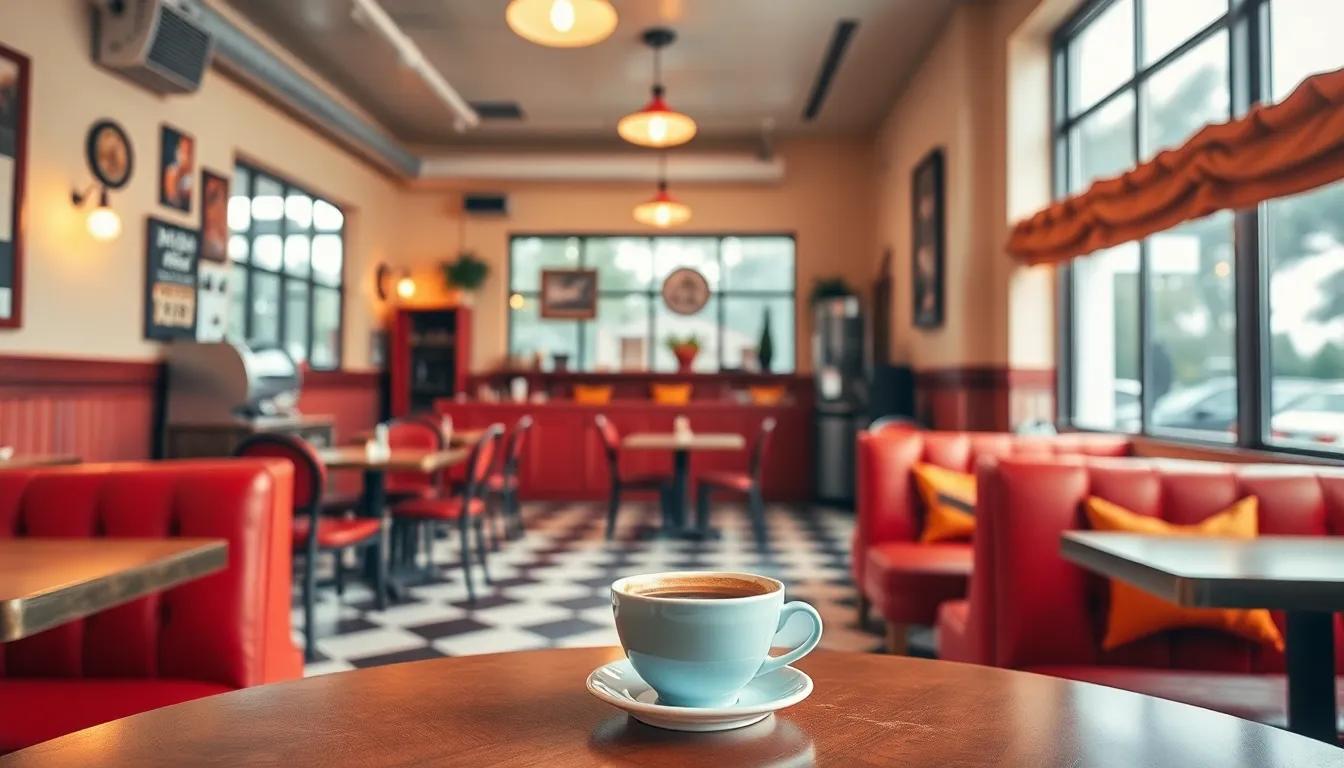
Colors significantly affect emotions and behaviors. Understanding this impact helps in various fields, including marketing and design.
Warm Colors and Their Effects
Warm colors like red, orange, and yellow evoke feelings of energy and warmth. Red often symbolizes passion and urgency, compelling attention and action. Designers frequently use orange to inspire enthusiasm and friendliness, making spaces feel inviting. Yellow promotes optimism and positivity, effectively brightening moods. In social settings, warm colors create a sense of coziness, encouraging interaction and engagement. Cafés often employ these colors to enhance customer experiences and increase dwell time. These warm hues can also stimulate appetite, making them popular in restaurant color schemes.
Cool Colors and Their Effects
Cool colors, including blue, green, and purple, generate feelings of calm and tranquility. Blue promotes serenity while instilling feelings of trust and reliability, common in corporate branding. Green often represents nature and renewal, fostering relaxation and balance. Designers use shades of green in wellness environments to help reduce stress. Purple can inspire creativity and spiritual connections, appealing to imaginative individuals. Utilization of cool colors in workspaces enhances focus and productivity. Many offices incorporate these tones to create an atmosphere of harmony and concentration.
Color Psychology in Marketing
Color significantly shapes marketing strategies, influencing consumer perceptions and choices. Brands leverage color to convey messages, evoke emotions, and establish identity.
Color Choice in Branding
Color choices in branding hold immense power. Red creates excitement, attracting attention and encouraging action. Blue builds trust, ensuring consumers feel secure with their purchases. Green symbolizes health and sustainability, appealing to eco-conscious shoppers. Yellow generates optimism, making brands feel approachable. Brands often use specific colors to align with their core values and target audiences. Customer recognition increases when color consistency is maintained, enhancing brand recall.
Influence on Consumer Behavior
Consumer behavior evolves substantially based on color psychology. Research shows that about 90% of snap judgments depend on color. This quick assessment impacts decisions, with colors triggering emotional responses. For example, warm colors evoke feelings of urgency, increasing purchase likelihood. In contrast, cooler tones promote calmness, encouraging prolonged engagement. Brands that understand these reactions can tailor marketing campaigns effectively, leading to higher conversion rates. Consequently, selecting the right colors can differentiate a brand in a saturated market.
Applications of Color Psychology
Color psychology finds practical uses in various fields, notably interior design and art.
Color in Interior Design
Colors significantly affect mood and behavior in interior spaces. Warm hues like reds, oranges, and yellows create inviting atmospheres, encouraging socialization and interaction. Various studies show that these colors can stimulate conversations and elevate spirits. On the other hand, cool colors, including blues and greens, promote concentration and tranquility. Spaces designed with these tones enhance productivity and relaxation. Designers carefully consider color schemes to evoke desired emotions while reflecting functionality of rooms. For instance, soft neutrals serve as versatile backdrops, allowing accents to shine, while deep tones add sophistication. Effective use of color influences how a space is perceived and experienced.
Color in Art and Fashion
Art and fashion heavily rely on color psychology to communicate themes and emotions. Artists utilize color palettes to evoke distinct feelings, guiding viewers’ interpretations. Bright colors often convey happiness or energy, while darker shades might evoke introspection or melancholy. Fashion designers strategically select colors based on seasonal trends and cultural meanings, impacting consumer choices. Research indicates that colors can enhance moods and influence self-expression. For instance, wearing bold colors can boost confidence, while softer tones often convey elegance or calm. Through careful selection, artists and designers shape perceptions and experiences in a powerful way.
Understanding color psychology is crucial for anyone looking to influence emotions and behaviors effectively. Colors shape perceptions and create atmospheres that can enhance experiences in various contexts. Whether it’s in marketing, interior design, or art, the right color choices can evoke specific feelings and drive consumer decisions.
As brands and designers harness the power of color, they can create more engaging and memorable experiences. Recognizing the psychological impact of colors allows for strategic decisions that resonate with audiences. Embracing color psychology not only enriches environments but also fosters deeper connections with consumers.

